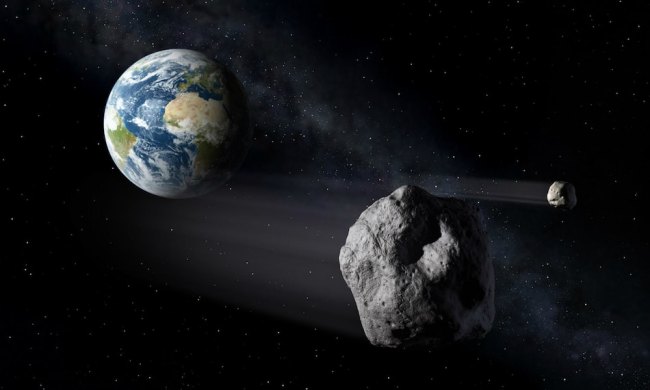A newly discovered asteroid up to 310 feet wide will hurtle between Earth and the moon this weekend at a speed of about 17,000 miles per hour (27,400 kilometers per hour) relative to Earth.
Asteroid 2023 DZ2 was discovered by astronomers at the observatory of La Palma, in the Canary Islands, Spain, on February 27.
The good news is that 2023 DZ2 is going to pass by at a distance of about 100,000 miles, so there’s no risk to communities here on terra firma.
Still, a close encounter with an asteroid this big doesn’t happen very often, so astronomers are understandably pretty excited about it.
“While close approaches are a regular occurrence, one by an asteroid of this size (140-310 feet) happens only about once per decade, providing a unique opportunity for science,” NASA said in a tweet on its Asteroid Watch account.
It added that astronomers with the International Asteroid Warning Network will use the close approach to learn as much as possible about 2023 DZ2, describing the event as “good practice for planetary defense in the future if a potential asteroid threat were ever discovered.”
As part of its ongoing planetary defense efforts, NASA last year crashed a spacecraft into a distant asteroid to see if the force of the collision would alter its course. Initial data suggested that the ambitious DART mission succeeded, providing humanity with a way of better protecting itself against any asteroids that are identified as being on a collision course with Earth.
How to track asteroid 2023 DZ2
As the asteroid will be passing by about halfway between Earth and the moon, it will resemble a slow-moving star if viewed through a small telescope, according to EarthSky.
The site says the best way to spot it will be by pointing a telescope toward a star in the asteroid’s path and then waiting for it to pass through the field of view. For those in the Northern Hemisphere, the best chance to spot 2023 DZ2 through a telescope will be early evening on Friday, March 24, clear skies permitting. The Sky Live offers various resources to help you pinpoint the rock as it zips by.
Alternatively, you can track asteroid 2023 DZ2’s progress in real time via NASA’s Eyes on Asteroids website, a powerful 3D visualization tool that tracks all the known asteroids in our solar system.


